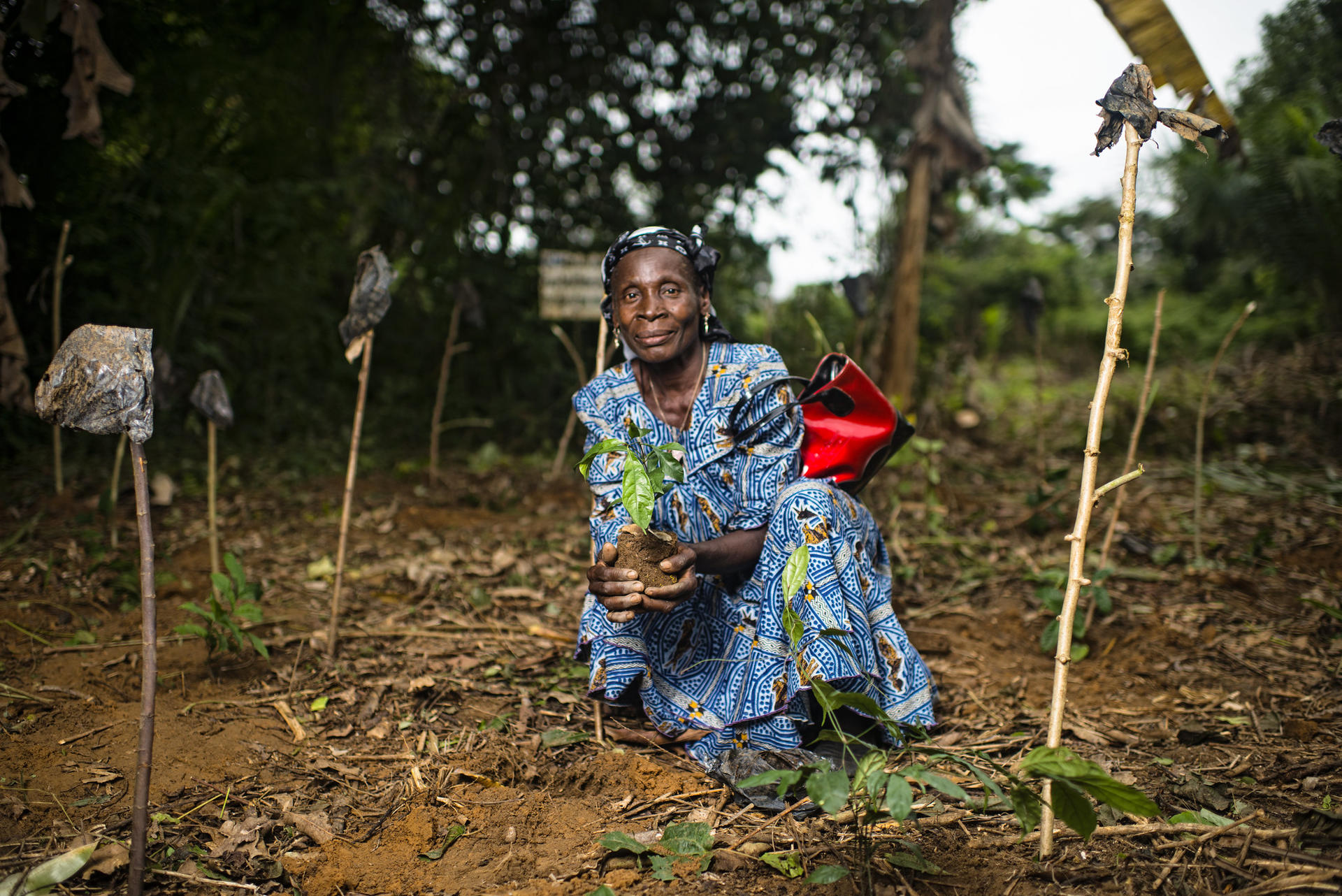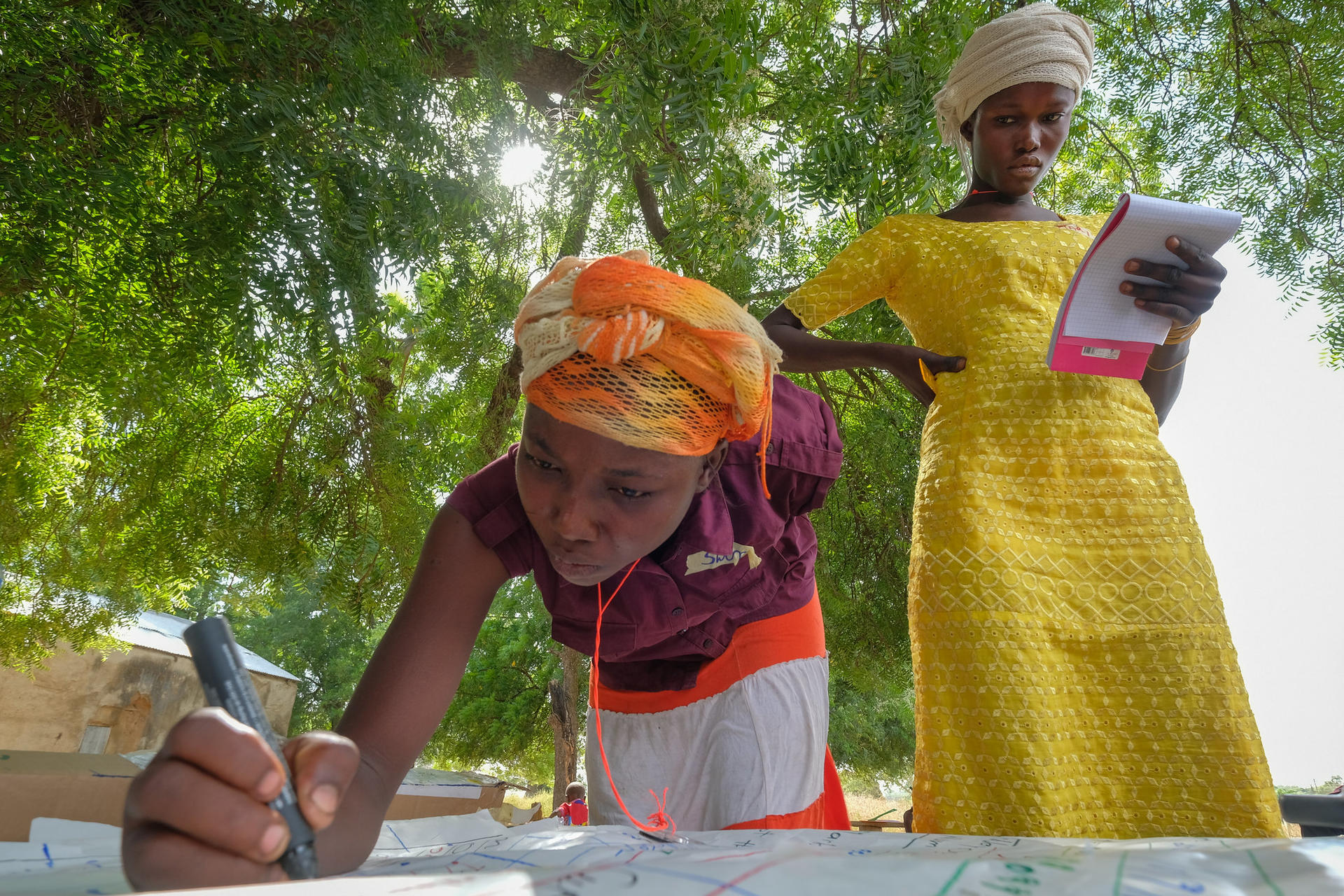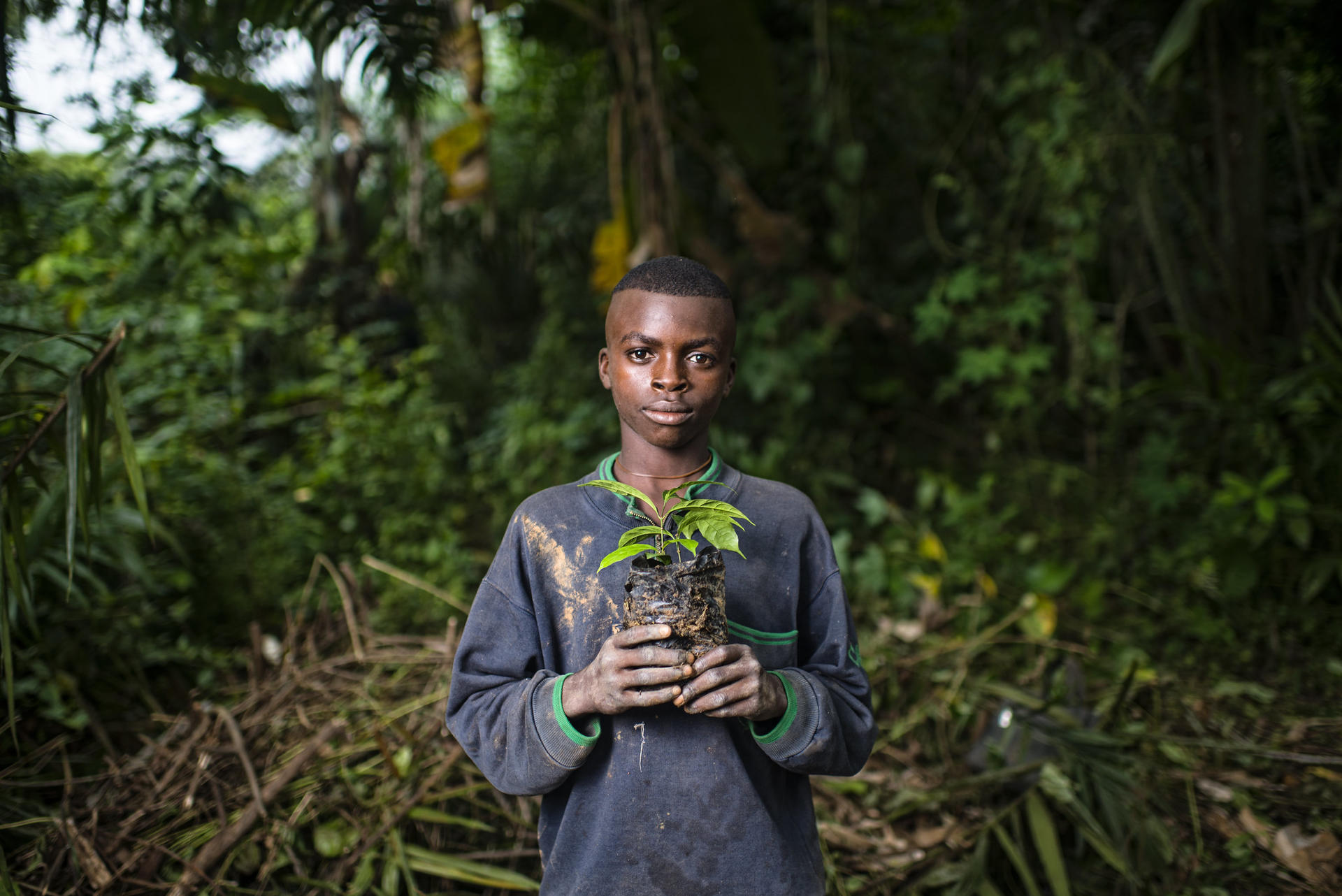2020 Annual Report Gender considerations in research are advancing, but more needs to be done

Alliance and CGIAR scientists are taking great strides to incorporate gender in research.
2020 marked the 25th anniversary of the Beijing Declaration and Platform for Action, a highly progressive agenda for women’s rights and gender equality. Yet, at the year’s close, the World Economic Forum said it will take more than a century to close the global gender gap at the present pace. The COVID-19 pandemic accentuated gender gaps in all spheres of life, from care work to employment, and across food systems.
The good news is gender is garnering significant attention in food systems research. The Sustainable Development Goals (SDGs) drew attention to gender equality and women’s empowerment, making gender equality a comprehensive part of the global agenda. Many donors now insist on gender mainstreaming while the growth in feminist development policies created a favorable environment for gender research and innovations.
A decade ago, the CGIAR Research Programs (CRPs) included gender strategies, and earmarked budgets, to allow researchers to accelerate work on gender in food systems. Researchers included gender considerations across the CGIAR portfolio, ranging from breeding and crop improvement, forestry and agroforestry, climate change, and value chains.
The adoption of a Gender Strategy and the creation of a gender Community of Practice helped anchor gender research in the Alliance. Efforts to strengthen capacities within centers and among partners materialized through trainings, a Gender Research Fellowship Programme and the creation of myriad resource materials.
With the Alliance of Bioversity International and CIAT, our gender team has become one of the largest in the CGIAR. Impactful gender research is central to our organizational structure and strategy, as illustrated by the creation of a “Gender Nexus Enabler+”, which sits within the Alliance’s Research Leadership Team.
An Alliance Gender Action Plan envisions that “all relevant Alliance research is gender-responsive, and that the Alliance generates specific opportunities to support the empowerment of women, youth, and marginalized groups.” The aim is to promote structural changes in institutions to advance gender equality outcomes.
These efforts were recognized within CGIAR when the Alliance was awarded leadership of the new CGIAR GENDER Platform’s Alliances Module. The module strengthens capacities for gender research in the CGIAR, builds partnerships to enhance the impacts of gender work and amplifies the visibility and reach of CGIAR research and that of our partners. This will solidly position our work in the upcoming conference Cultivating Equality 2021.

A mapping workshop in Nakhon, Kassena Nankana District - Ghana. Credit: CIFOR/Axel Fassio
Toward a new norm
2020 included close collaborations among Alliance gender scientists and CGIAR bio-physical scientists, national agriculture research organizations, and universities in banana agrosystems research, exemplifying how gender-responsive research can become the new norm. In research articles with the CRP Roots, Tubers and Bananas, scientists identified gender-differentiated trait preferences for banana in East Africa highlands. Using a gender lens to study banana crop management led to recommendations to improve the control of banana diseases such as Xanthomonas Wilt.
In Eastern and Southern Africa’s bean corridor, the Pan-African Bean Research Alliance (PABRA) strengthened the capacities of producers in production, nutrition and gender equality. This increased women’s participation and leadership, as well as their income, productivity and decision-making. In Burundi, 65% of women who received training reported using the knowledge and skills they acquired to change production practices. 21.5% adopted high-yielding varieties and 8.5% reported feeling empowered by their participation in the program. Adoption of high-yielding bean varieties resulted in a 40% increase in yields, 61% higher incomes, and improved food security and nutrition.
These efforts added to a substantial repertoire of gender research in the Alliance demonstrating the challenges that remain and opportunities to ensure that women and men have equal opportunities to engage in food systems projects and initiatives, but also to address the underlying causes of gender inequality, such as discriminatory norms and policies. Challenging the inequalities in food systems is an ambitious and long-term undertaking, but one we must tackle to achieve equitable, resilient, and sustainable food systems in a safe and just operating space for humanity.

Ngotimi Rodrigue holds a Gnetum (okok) plant in the village of Minwoho, Lekié, Center Region, Cameroon. Credit: CIFOR/Ollivier Girard
Research Highlight
Identifying local solutions in the Barotse floodplain for sustainable agricultural development
To develop locally relevant strategies that improve food security, nutrition, and conservation, researchers employed a gendered ecosystem services approach in Zambia.
Read the press release here.
More Research Highlights
Women excluded in Indian forests
A study on India’s Joint Forest Management program showed that social exclusions in the program occur along gender and caste lines. Women from certain tribal groups are particularly excluded despite their high reliance on the forest.
A presentation about this work can be found here.
Don’t just ask the men
This study found that when a male smallholder speaks for his entire household, researchers may not uncover the complexity of a woman’s decision-making in agricultural households, which can limit the design and implementation of inclusive agricultural programs.
Of women, men and bananas
How do farmers perceive banana planting material from different sources, including private companies, public and nongovernmental organizations, neighbors and their own farm?
This study described Ugandan women and men farmers’ perspectives on of different planting materials.
Gender-based discrimination threatens crop yield
This study, in Tanzania, found that the gender yield gap can be reduced significantly if policies give rural women better access to productive resources and information.
Read our press release here.
Commercial agriculture needs to include women
This study in Uganda, a country with one of the youngest populations in the world, found that few young men and women aspire to farming as a primary livelihood. Most remain engaged in agriculture, although in different ways for men and women due to norms limiting young women’s employment in commercial agriculture.
A better method to disentangle gender gaps
Drawing on data from six African countries, this study explored how using different commonly adopted indicators for women’s land rights leads to different conclusions about gender gaps in land rights.
Read our blog about the research here.
